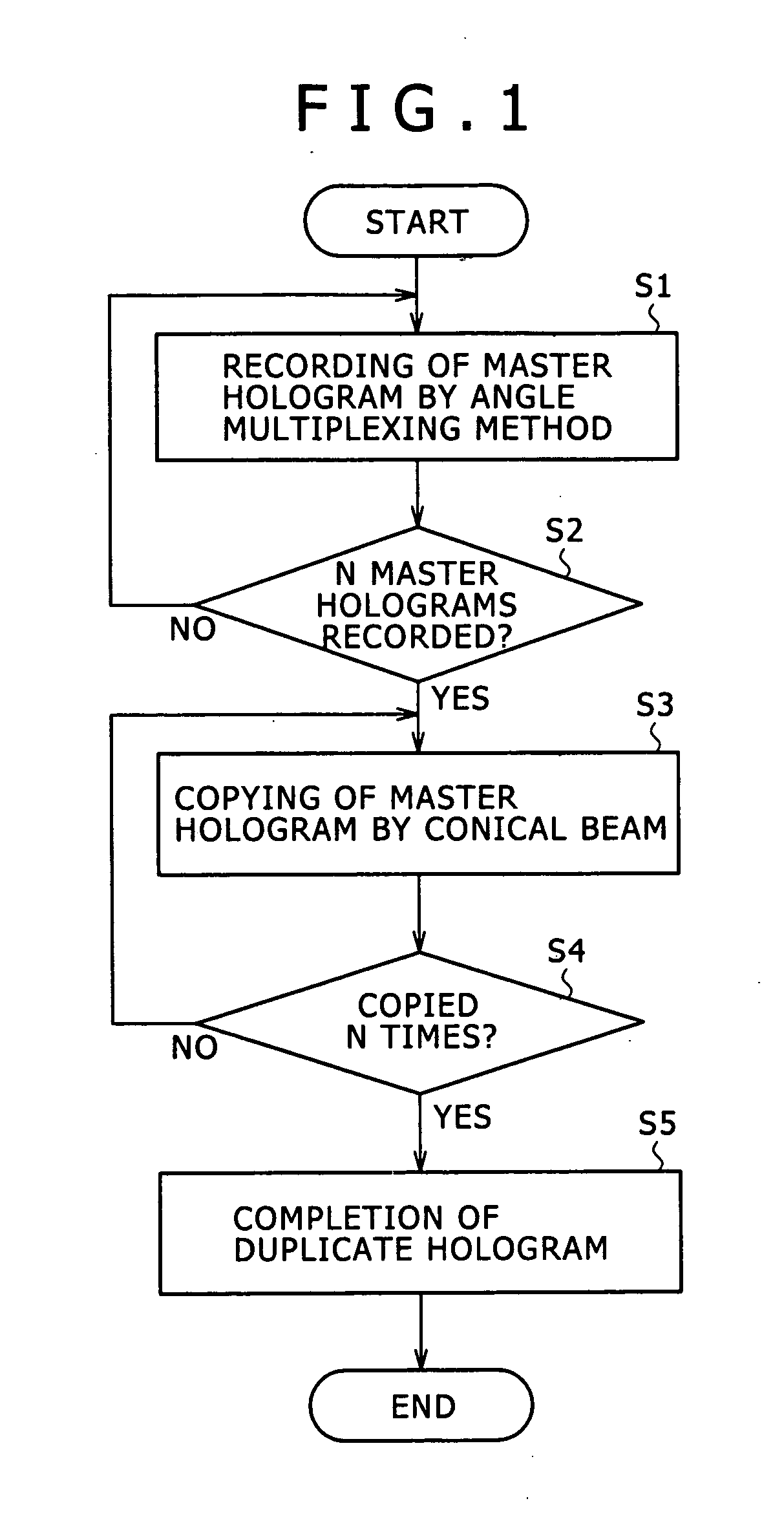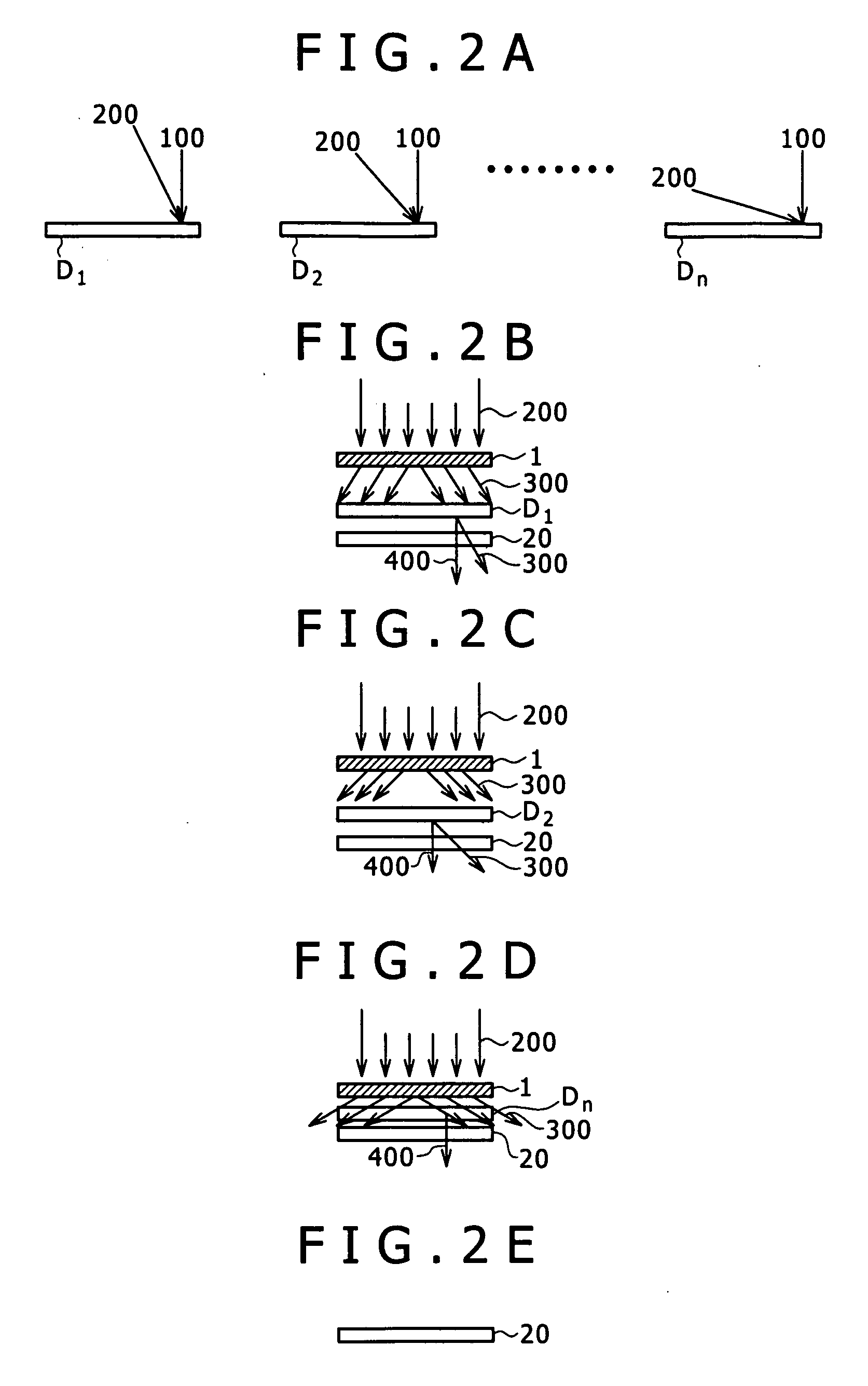Hologram duplication method
a duplication method and hologram technology, applied in the field of hologram duplication method, can solve the problems of difficult to reproduce the duplication of holograms recorded in disk-type recording media, difficult to produce reference beams for use upon duplication, and the inability of conventional emboss type duplication methods to duplicate volume-recorded data pages (holograms)
- Summary
- Abstract
- Description
- Claims
- Application Information
AI Technical Summary
Benefits of technology
Problems solved by technology
Method used
Image
Examples
first embodiment
[0025] Referring first to FIG. 1, there is illustrated a general procedure of a hologram duplication method to which the present invention is applied. First, N master disks on which master holograms (data pages) are recorded in accordance with the angle multiplex method are produced (steps S1 and S2). In particular, as seen in FIG. 2A, data pages to be N-multiplexed originally are recorded, on a disk-type hologram material for each one data page, as interference fringes between a reference light beam 200 whose incoming angle varies and a signal light beam 100 spatially optically modulated by the data page. Consequently, N master disks D1 to Dn are produced. It is to be noted, however, that the incoming angle of the reference light beam 200 is varied within a plane defined by a disk normal line and a disk radial direction as seen in FIG. 3.
[0026] Then, copying of the master holograms recorded on the n master disks D1 to Dn to a single duplication hologram material 20 is performed (s...
second embodiment
[0040]FIG. 8 illustrates a general procedure of another hologram duplication method to which the present invention is applied and particularly illustrates a method of duplicating a hologram recording medium of the card type.
[0041] Referring to FIG. 8, N master disks of the angle multiplex type are produced (steps S11 and S12). In particular, as seen in FIG. 9A, data pages to be N-multiplexed originally are recorded, on a duplication hologram material 30 in the form of a card for each one data page, as interference fringes between a reference light beam 200 whose incoming angle varies and a signal light beam 100 spatially optically modulated by the data page. Consequently, N master cards C1 to Cn are produced.
[0042] Then, copying of recorded data of the N master cards C1 to Cn to one duplication hologram material 30 is performed (steps S13 and S14). More particularly, the reference light beam 200 in the form of parallel light beam is converted into an obliquely incoming beam 500 by...
PUM
 Login to View More
Login to View More Abstract
Description
Claims
Application Information
 Login to View More
Login to View More - R&D
- Intellectual Property
- Life Sciences
- Materials
- Tech Scout
- Unparalleled Data Quality
- Higher Quality Content
- 60% Fewer Hallucinations
Browse by: Latest US Patents, China's latest patents, Technical Efficacy Thesaurus, Application Domain, Technology Topic, Popular Technical Reports.
© 2025 PatSnap. All rights reserved.Legal|Privacy policy|Modern Slavery Act Transparency Statement|Sitemap|About US| Contact US: help@patsnap.com



